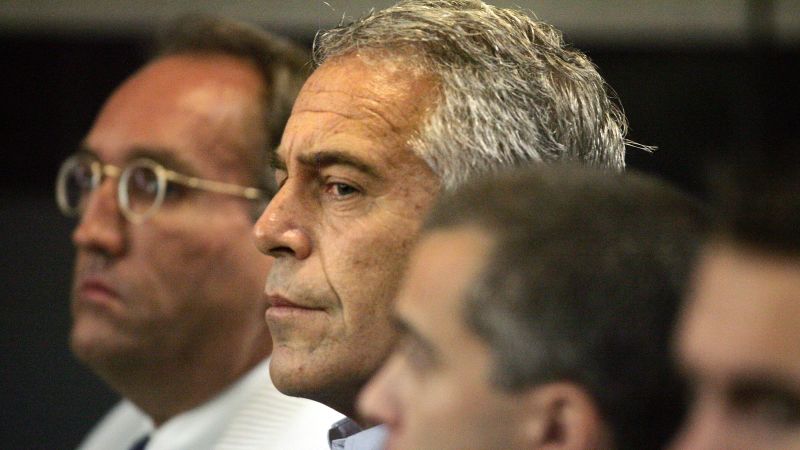The Troubling Legacy of Trump and Epstein: An Unraveled Tapestry
News Analysis
In the ongoing saga of former President Donald Trump and convicted sex offender Jeffrey Epstein, clarity remains elusive. Trump, keen on distancing himself from anything that tarnishes his image, has recently made comments about his associations with Epstein that raise more questions than they answer. This tangled web of relationships, accusations, and denials creates a narrative that warrants deeper exploration.
On October 3, while returning from a state visit to Scotland, Trump spoke to reporters aboard Air Force One. He stated, “The answer is yes, they are,” in response to questions regarding Epstein’s alleged interactions with his club’s staff. The issue was seemingly relegated to the past, but the implications linger, particularly considering the gravity of Epstein’s crimes.
Context is Key
So, what’s the backdrop here? For those who don’t remember—or who simply don’t know—Epstein was arrested in July 2019 and later charged with sex trafficking minors. Reports have repeatedly surfaced about his connections to Trump, a relationship that allegedly soured after Epstein engaged in practices that raised alarm for the then-business mogul. An unnamed source close to Trump stated, “Listen, you don’t want to take our people if you don’t want to be a spa,”—a warning that seemingly went ignored.
Reporting from the Washington Post in 2019 indicated that Epstein had "stolen" employees from Trump’s Mar-a-Lago estate, further complicating their association. Official accounts suggest Trump banned Epstein from the club back in the early 2000s for “being a creep,” yet what remains obscured is how deep Trump’s awareness of Epstein’s predilections went at the time. Was he truly oblivious? Or was it a case of willful ignorance?
Speaking of Uncomfortable Truths
For many, the truth is straightforward: Trump’s reluctance to frame Epstein in a narrative that tarnishes his own reputation. His latest remarks on banning Epstein raise alarms but also confusion. Just last week, the White House communications team reiterated that Trump expelled Epstein from the club precisely because he was a “creep.”
Amidst the smokescreen of varying accounts, insiders intimate that the dissonance between Trump’s public statements and past actions casts shadows on his character. When Trump claimed, “He stole the people who worked for me,” incredulity looms. This statement—though it has been repeated—overlooks the nature of those employees. How young were they? What specifically did he mean by “stole”?
Diverse Voices Ignored
The voices of those most affected—the victims—are seldom prioritized in such discussions. Virginia Giuffre, a prominent Epstein accuser, worked as an employee at Mar-a-Lago, contributing to the chilling reality of just how interwoven these narratives are. During a statement in response to questions, Trump noted, “I think she has worked in the spa. Yes. He stole her.” His comments strip her of agency in a story that should be about empowerment and justice.
There’s an unsettling feeling that Trump is attempting to walk a tightrope: acknowledging the past without taking accountability. And, you know, it’s the perfectly human tendency to shy away from discomfort.
The Weight of Inconsistencies
The multiple versions of reality surrounding Trump and Epstein add to the wreckage of collective memory. Former Trump adviser Sam Nunberg stated to the Washington Post that Trump expelled Epstein for attempting to recruit a young woman at his club—years before Epstein’s illegal activities became common knowledge. Was it 2005? Oh wait, that sounds about right!
This consistency in inconsistency reflects not only on Trump’s credibility but, frustratingly, also on our collective ability to understand a thoroughly complex narrative.
The Questions Remain
So, where does this leave us? Lingering uncertainties continue to cast doubt. The dual narratives surrounding their relationship paint a picture where facts become subjective interpretations. As media outlets chase after these tales, they skirt the real ramifications. These aren’t just stories about two wealthy men falling out over real estate; they unravel deeper societal failures related to accountability, power dynamics, and victimization.
In the end, the truth eludes us.
What’s next for Trump? How will he navigate this unseemly chapter in his legacy? Will the victims’ voices ever become prominent enough to challenge the narratives constructed by powerful men? The questions remain unanswered, lingering in the air like an unwelcome specter.
Ultimately, the stories we tell—or fail to tell—shape our understanding of justice itself. And in this case, that justice is sorely lacking.


